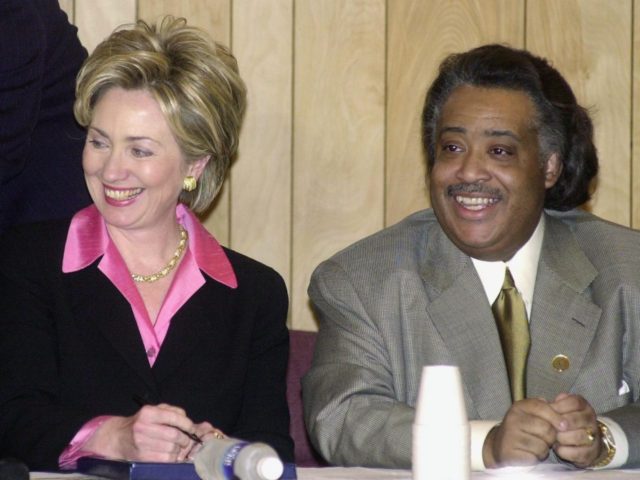Al Sharpton has been a minor player in the Black Lives Matter chaos, but returned to his divisive habits last weekend with an op-ed in the New York Daily News on the 25th anniversary of the Crown Heights riots, casting Jews as the aggressors.
In his re-telling, the young black boy who died tragically in a traffic accident involving the Lubavitcher Rebbe’s motorcade, Gavin Cato, was a precursor to Michael Brown, the black teen who attacked a police officer and was killed in Ferguson, Missouri.
Not only does that parallel insult Cato’s memory — unlike Brown, he was an innocent child — but it also paints the Rebbe, one of the kindest souls the world has ever known, as a kind of villain.
To do that, Sharpton has to distort history: “… a Hasidic-run ambulance service took the Jewish driver responsible for the accident away, but not Gavin or Angela,” he says.
As the exhaustive Girgenti Report showed (p. 56), police instructed the ambulance service to leave. A false rumor spread that the Jewish paramedics had abandoned the black child — a rumor that triggered the violence, and that Sharpton has now repeated.
(Ironically, in 2011, on the 20th anniversary, Sharpton admitted: “Our language and tone sometimes exacerbated tensions and played to the extremists.” Since then, the left has found political reasons to play to the racial extremists again, evidently.)
The Daily News itself has indulged in historical revisionism, blaming both sides for what was almost entirely a riot against Jews — one in which a young, innocent Jewish man from Australia, Yankel Rosenbaum, was murdered by an angry mob. A recent retrospective actually described the riots as “three days of unremitting turmoil that pitted angry Hasidic Jews against outraged African-American and Caribbean residents.”
No, in fact: the riots were an anti-Jewish “pogrom” — as the Forward noted at the time, calling it “a pogromlike attack on the religious Jews in the city in which they’d taken refuge.”
Perhaps the Daily News is merely reprising the media bias of the time, which was at great pains to downplay the culpability of black leaders like Sharpton, and the residents they incited. One of the Times‘ own reporters, Ari Goldman, recalled:
Journalists initially framed the story as a “racial” conflict and failed to see the anti-Semitism inherent in the riots …
… [W]hen I picked up the paper, the article I read was not the story I had reported. I saw headlines that described the riots in terms solely of race. “Two Deaths Ignite Racial Clash in Tense Brooklyn Neighborhood,” the Times headline said. And, worse, I read an opening paragraph, what journalists call a “lead,” that was simply untrue:
“Hasidim and blacks clashed in the Crown Heights section of Brooklyn through the day and into the night yesterday.”
In all my reporting during the riots I never saw — or heard of — any violence by Jews against blacks. But the Times was dedicated to this version of events: blacks and Jews clashing amid racial tensions.
…
“You don’t know what’s happening here!” I yelled. “I am on the streets getting attacked. Someone next to me just got hit. I am writing memos and what comes out in the paper? ‘Hasidim and blacks clashed’? That’s not what is happening here. Jews are being attacked! You’ve got this story all wrong. All wrong.”
Since then, tensions in Crown Heights have faded. But that does not serve the purposes of people like Sharpton, for whom the Black Lives Matter movement is an opportunity to regain political leverage.
Five years ago, Sharpton wrote that the lesson of Crown Heights was the importance of reconciliation: “Crown Heights showed how some of us, in our smallness, can divide. We must seek to be big.”
Today, he says the lesson is the importance of renewing the political struggle. What a small man.
Joel B. Pollak is Senior Editor-at-Large at Breitbart News. His new book, See No Evil: 19 Hard Truths the Left Can’t Handle, is available from Regnery through Amazon. Follow him on Twitter at @joelpollak.

COMMENTS
Please let us know if you're having issues with commenting.